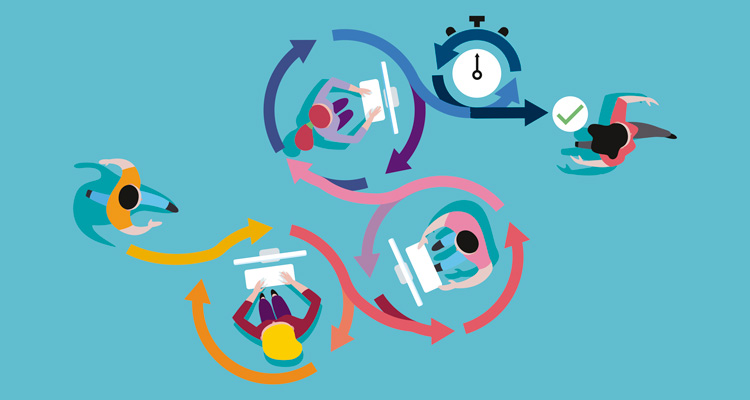
The ultimate goal of Lean management is to maximize customer value while minimizing waste. Traditionally focused on manufacturing and software development, customer value comes in the form of speed, price, and product quality. But what about the value of customer service? We’ve found that practicing Lean principles can help you become a more efficient customer-focused company with a competitive advantage.
The use of Lean is ever-expanding. We can now apply the methodology behind continuous improvement to any service-based business, from retail and hospitality to accountancy and marketing firms. And by making improvements to processes and service delivery as well as reducing lead times, we can deliver value to the customer that is worth more than any dollar amount — exceptional customer experiences.
You can find a way to use all of the 7 Lean Principles to improve customer service, but let’s start with two that we’ve found to be most effective:
This foundational Lean principle can go a long way, but it can also become a slogan in the background that loses its meaning. Embedding it into every customer interaction can be the key to providing customer service that sets you apart from your competitors. Here are some ways you can leverage Respect for People to improve customer service:
PROVIDE SINCERE AND HELPFUL CUSTOMER SERVICE
Skip the niceties and find out what the customer really needs in the moment. Being polite is great, but being real will go further. Deal with customers honestly and in good faith. This will build trust and have customers wanting to reach out when they have an issue, rather than deciding to take their business elsewhere.
RESPECT TIME AND EXPERIENCE
You can respect a customer by respecting their time and experience. Apply value stream mapping to processes that directly impact customers, and optimize the process based on their experience. For example, try to automate steps in a call center process that have the potential to reduce the Average Speed of Answer (ASA) for customers.
BE PROACTIVE, NOT REACTIVE
By keeping your customers front of mind, you can improve their customer experience, while establishing your company as trustworthy. Alert customers to potential problems before they reach out to you and establish a level of service that will make for loyal, repeat customers.
Here are two examples:
- Say you are an e-commerce store and are experiencing shipping delays. Automate and proactively reach out to the specific customers who are impacted. They’ll appreciate the update and are less likely to cancel their order if they are informed before they have to reach out for answers. Without doing this, many customers are left waiting, and MANY MORE will reach out to you for reactive support, which costs you more money and time in these 1:1 interactions.
- If your service has a known bug or issue, personalize the experience by letting those specific customers know and offer a timeframe for a fix or workaround.
ELIMINATING WASTE
As another core principle of Lean methodology, eliminating waste is a simple way that you can improve customer service. Here are some examples:
AVOID CONTEXT SWITCHING
Avoiding context switching is a proven method to eliminate waste in internal processes. Employees are more productive–and ultimately happier–when they are focused on one task at a time. The same goes for the customer experience. Look for points in the customer journey where you can eliminate context switching for the customer. This may mean reducing the amount of clicks for an online purchase, or the amount of times you transfer their call when they have a question.
SHORTEN FEEDBACK LOOPS
Shorten customer service feedback loops. This is similar to the way you handle continuous improvement in any area of the business. The faster you provide feedback from support interactions to the appropriate teams, the faster those interactions can become useful knowledge base and product improvements.
CONCLUSION
Applying Lean principles is key to a successful customer service experience. Be honest with your customers, offer transparency and evaluate your current process to see where you can streamline to make the experience better for your employees and your customers. All it takes is a shift in your mindset to uncover areas of improvement that could put your company ahead of the game.




